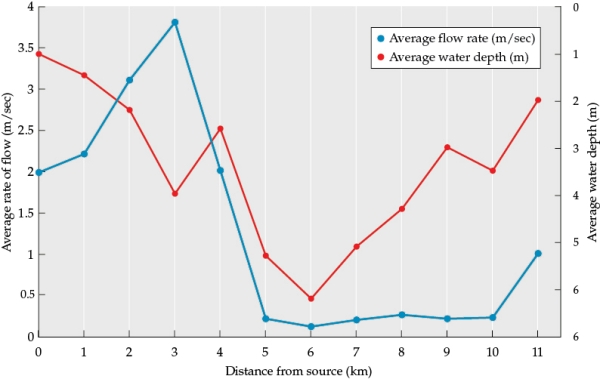Refer to the figure.
Figure 1
 You are studying a river in its natural state, unaffected by human activities. Your data are graphed in Figure 1. You began collecting data at the source of the river ("0 km" on the figure) and continued to sample the river every 1 km.
You are studying a river in its natural state, unaffected by human activities. Your data are graphed in Figure 1. You began collecting data at the source of the river ("0 km" on the figure) and continued to sample the river every 1 km.
-The river you were studying (data in Figure 1) is suddenly diverted at its source and the entire river channel path is changed. The former path of the river is now terrestrial. Based on the data on river flow and water depth collected before the river was diverted (Figure 1), which areas would be most likely to have soils with the highest cation exchange capacity after river diversion, and why? Give your answer as the distance in km from the former source of the river.
Definitions:
Q2: How might a critic of Florence Nightingale's
Q5: Where would a keystone species most
Q8: Nursing-sensitive indicators identified by the American Nurses
Q8: The final theoretical stage of succession is
Q16: By means of a process called _,
Q30: Kenya is located in the _ biogeographic
Q53: Consider two species in competition for shared
Q70: Which statement about color change during leaf
Q71: Refer to the figure.<br>Figure 1<br> <img src="https://d2lvgg3v3hfg70.cloudfront.net/TBO1115/.jpg"
Q72: In his experiments in lakes in Ontario,